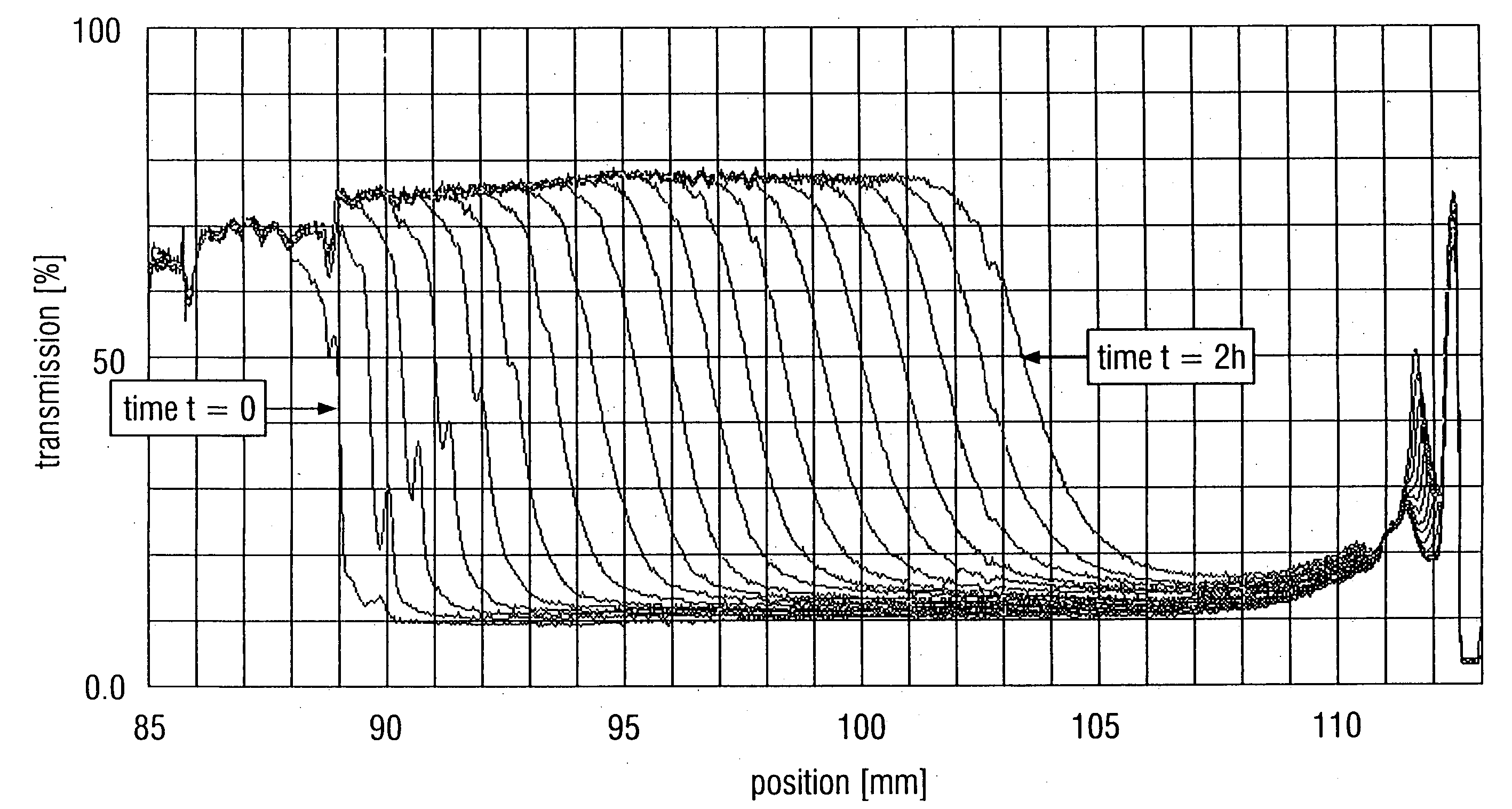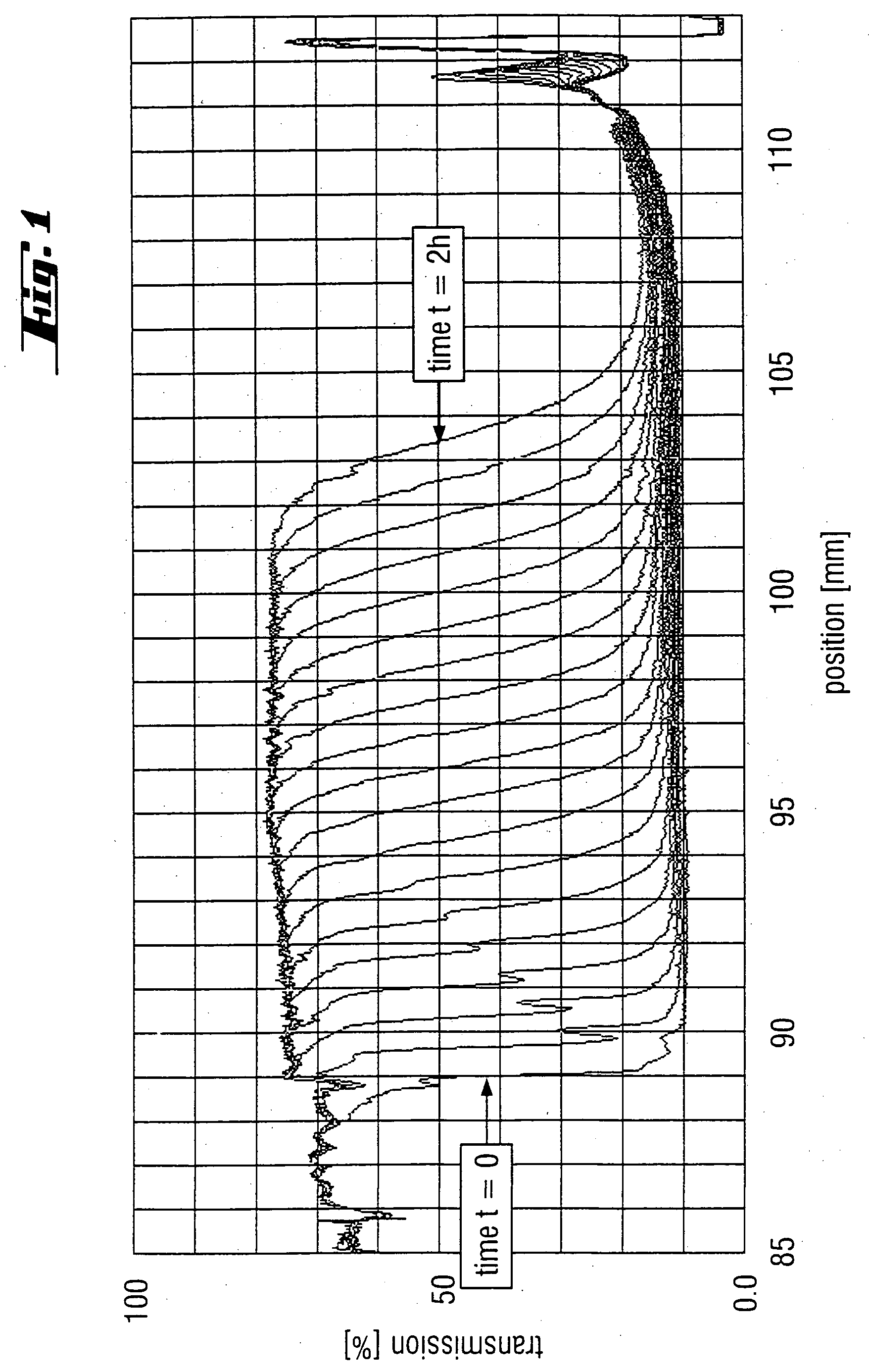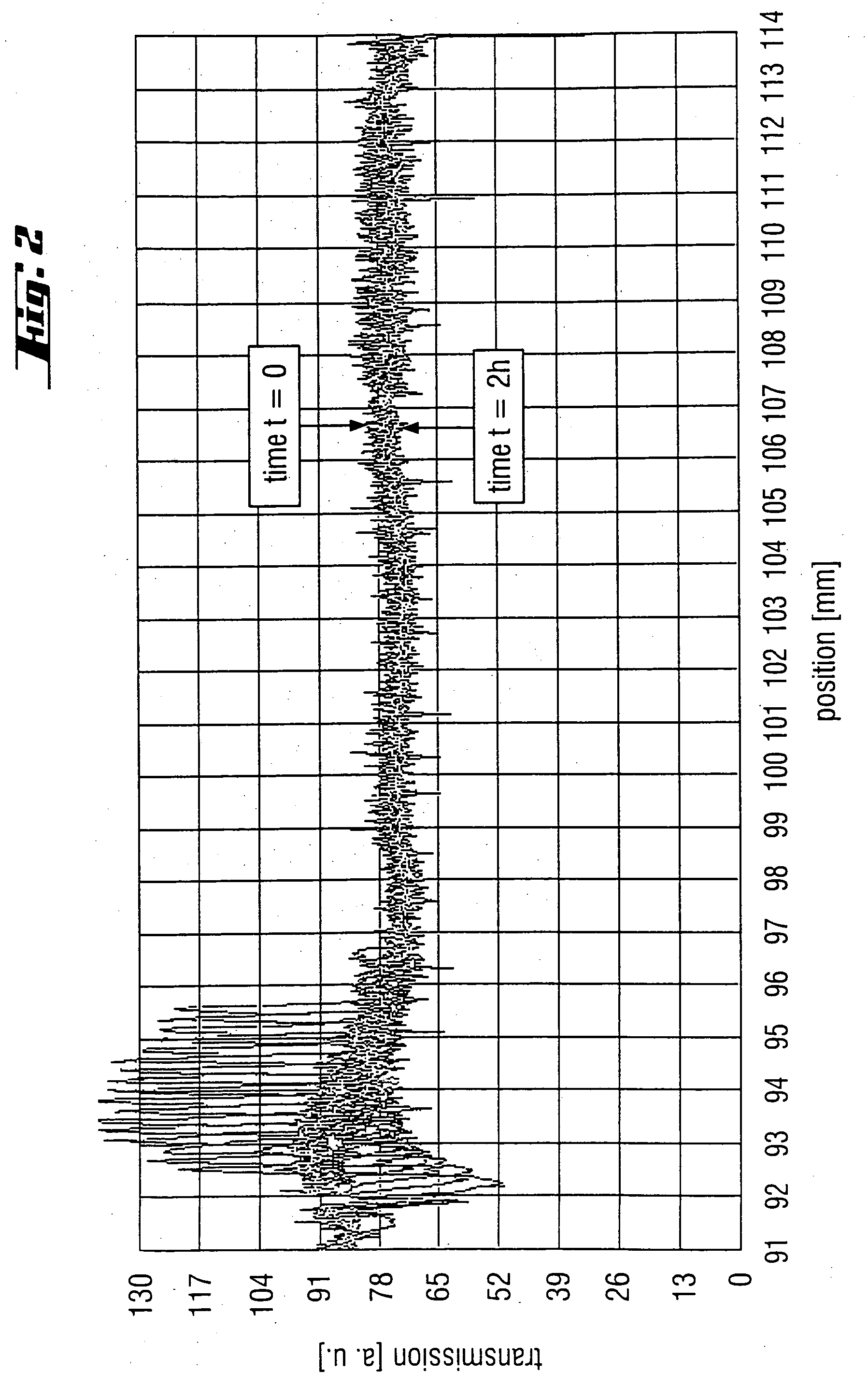Dispersion which contains at least 2 types of particles
a technology of particles and dispersions, applied in the field of dispersions, can solve the problems of disadvantageous high electrolyte content or salt content, and disadvantageous alkalinity
- Summary
- Abstract
- Description
- Claims
- Application Information
AI Technical Summary
Benefits of technology
Problems solved by technology
Method used
Image
Examples
example 1
[0089] In a batchwise apparatus, 0.5 kg of pyrogenically prepared aluminum oxide having a specific surface area of 100 m2 / g and an Al2O3 content of more than 99.6% by weight (measured on the material ignited at 1000° C. for 4 hours) and 170 kg of hydrophilic silicic acid having a specific surface area of 300 m2 / g (obtainable under the name WACKER HDK T30 from Wacker-Chemie GmbH, Burghausen, Germany), the specific surface area being measured in each case by the BET method according to DIN 66131 and 66132, are added in small steps at a temperature of 25° C. to 830 kg of water and dispersed using a Koruma rotor-stator dispersing unit over the course of 8 hours.
[0090] A low-viscosity whitish aqueous dispersion having a solids content of 17% by weight and a pH of pH 3.8 forms. The dispersion is stable to sedimentation and gelling for more than one year. At a shear gradient of 100 l / s and a temperature of 25° C., measured using a cone-and-plate rotation viscometer from Haake, RheoStress ...
example 2
[0091] In a batchwise apparatus, 0.4 g of pyrogenically prepared aluminum oxide having a specific surface area of 100 m2 / g and an Al2O3 content of more than 99.6% by weight (measured on the material ignited at 1000° C. for 4 hours) and 240 g of hydrophilic silicic acid having a specific surface area of 200 m2 / g (obtainable under the name WACKER HDK N20 from Wacker-Chemie GmbH, Burghausen, Germany) are added in small steps at a temperature of 25° C. to 1760 kg of water and dispersed using a Unimix rotor-stator dispersing unit, Unimix, from Ekato, Germany, over the course of 12 hours.
[0092] A low-viscosity whitish aqueous dispersion having a solids content of 12% by weight and a pH of pH 3.9 forms. The dispersion is stable. to sedimentation and gelling for more than one year. At a shear gradient of 100 l / s and a temperature of 25° C., measured using a cone-and-plate rotation viscometer from Haake, RheoStress 600, the dispersion has a viscosity of 90 mPa.s. The dispersion has a zeta p...
example 3
[0094] In a batchwise apparatus, 0.5 kg of pyrogenically prepared aluminum oxide having a specific surface area of 100 m2 / g and an Al2O3 content of more than 99.6% by weight (measured on the material ignited at 1000° C. for 4 hours) and 170 kg of hydrophilic silicic acid having a specific surface area of 150 m2 / g (obtainable under the name WACKER HDK V15 from Wacker-Chemie GmbH, Burghausen, Germany) are added in small steps at a temperature of 25° C. to 830 kg of water and dispersed using a Koruma rotor-stator dispersing unit over the course of 8 hours.
[0095] A low-viscosity whitish aqueous dispersion having a solids content of 15% by weight and a pH of pH 3.9 forms. The dispersion is stable to sedimentation and gelling for more than one year. At a shear gradient of 100 l / s and a temperature of 25° C., measured using a cone-and-plate rotation viscometer from Haake, RheoStress 600, the dispersion has a viscosity of 80 mPa.s. The dispersion has a zeta potential of −21 mV, measured by...
PUM
| Property | Measurement | Unit |
|---|---|---|
| diameter | aaaaa | aaaaa |
| conductivity | aaaaa | aaaaa |
| mean diameter | aaaaa | aaaaa |
Abstract
Description
Claims
Application Information
 Login to View More
Login to View More - R&D
- Intellectual Property
- Life Sciences
- Materials
- Tech Scout
- Unparalleled Data Quality
- Higher Quality Content
- 60% Fewer Hallucinations
Browse by: Latest US Patents, China's latest patents, Technical Efficacy Thesaurus, Application Domain, Technology Topic, Popular Technical Reports.
© 2025 PatSnap. All rights reserved.Legal|Privacy policy|Modern Slavery Act Transparency Statement|Sitemap|About US| Contact US: help@patsnap.com



